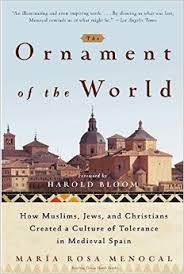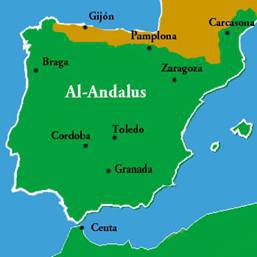Editor’s Note: Ann Lippel responds to Nick Levitin’s article, To Learn, To Grow, and To Do Justice, and to Rabbi Greenstein’s article, A Community of Courage
 Kudos to Rabbi Greenstein, the Ritual Committee, and the Shomrei Board on taking an affirmative stand for distributing an alternate translation of Leviticus passages related to homosexuality.
Kudos to Rabbi Greenstein, the Ritual Committee, and the Shomrei Board on taking an affirmative stand for distributing an alternate translation of Leviticus passages related to homosexuality.
Rabbi Greenstein’s discussion of the power of the printed word and our ancient tradition of returning to the Torah to see the truths in our world coincidentally corresponded to my completion of a very moving history of the period of Muslim rule in the Iberian peninsula. The civilization was known as Al Andalus – or Sefarad to Jews. The history is called Ornament of the World by Maria Rosa Menocal.
Menocal documents the remarkable civic, artistic, architectural, scientific, philosophic and cultural achievement of Al Andalus/Sefarad across 400 years. Sefarad showed that a multiethnic and religiously pluralistic civilization, peopled by followers of all of the Abrahamic religions, would nurture  exceptional thinkers and leaders who not only influenced their own time but whose learning was treasured by enlightened European rulers for hundreds of years, and whose words and deeds still resound for us today. From this civilization came Jewish exemplars: Hasdai ibn Shaprut (Vizier & linguist), Samuel the Nagid (Vizier & scribe), Halevi (poet & author of Book of the Khazars), Moses of Leon (author of The Book of Zohar), Maimonides (physician, scholar, poet and author of Guide to the Perplexed). These men were multi- lingual, exceptional thinkers, equally curious regarding matters of philosophy/science and religion, and seekers after truth. Influential and trusted leaders in this pluralistic society understood that human expressions of language, especially written forms of language, shape culture. Menocal reminds us that the professional translators from Al Andalus were the highest paid wage earners of their time!
exceptional thinkers and leaders who not only influenced their own time but whose learning was treasured by enlightened European rulers for hundreds of years, and whose words and deeds still resound for us today. From this civilization came Jewish exemplars: Hasdai ibn Shaprut (Vizier & linguist), Samuel the Nagid (Vizier & scribe), Halevi (poet & author of Book of the Khazars), Moses of Leon (author of The Book of Zohar), Maimonides (physician, scholar, poet and author of Guide to the Perplexed). These men were multi- lingual, exceptional thinkers, equally curious regarding matters of philosophy/science and religion, and seekers after truth. Influential and trusted leaders in this pluralistic society understood that human expressions of language, especially written forms of language, shape culture. Menocal reminds us that the professional translators from Al Andalus were the highest paid wage earners of their time!
Like Rabbi Greenstein, these translators took upon themselves the burden of conveying the ancient wisdom in language that was accessible. Toledo, the international center for translation and learning, was built upon the efforts of Jewish and Muslim translator/linguists who brought the learning, culture and habits of reasoning from the ancient world into the vernacular. And, thus, the vernacular became the voice of authority and legitimacy to the masses. According to Menocal, The bedrock of Andalusian Jewish culture for hundreds of years, that had allowed it to flourish in the ways it had, was the premise that genuine Jewish culture and devout faith in Judaism were not at destructive odds with the whole complex of secular activities they were cultivating. Menocal’s conclusion resonates for me as an American Jew in 2016.
And, so, we in Shomrei are blessed to have a true heir of Sefarad in our Rabbi. The search for truth in Torah is his noble calling and he has blessed us with a translation of Leviticus that liberates me from a personal discomfort and guilt when reading these translated passages. Like his forebears in Sefarad, he has provided a bridge between an ancient and sacred text to a vernacular that speaks truth for our time.
- Impressions from the Shomrei Civil Rights Trip - Thu, Jan 11, 2024
- Quiet Heroism in Interfaith Cooperation - Thu, Dec 8, 2016
- Translation – A Path to Tolerance - Thu, Mar 31, 2016

Yasher Koach
What a great essay by Ann! I am very interested in the period in question, and will be sure to check out Menocal’s book, of which I had not heard before. Thank you, Ann!